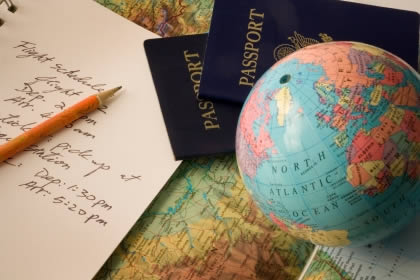Environmentally Sensitive Travel Locations
The reckless mismanagement of governments and businesses on environmental preservation has resulted in the deterioration of many of the world’s most beautiful locations. In this section we take a look at some of the places in the world that are in danger of becoming destroyed due to the mismanagement of tourism as well as places that are in danger of extinction due to environmental factors.
Cozumel Island Coral Reef
Cozumel is an island in the Caribbean located just off the coast of Mexico‘s Yucatan Peninsula.
The geography of the island protects Cozumel’s famous coral reef from the open ocean making it one of the most beautiful and largest coral reefs in the Caribbean. The natural ecosystem of the reef is home to thousands of species of marine life and its size contributes significantly to the pH and balance of marine life in the greater area around the reef as well. Due to its beauty and the popularity of Cozumel as a vacation destination, scuba diving in the coral reef is one of Cozumel’s main tourist attractions. Although the park protects the reef from divers directly touching or removing anything from the reef, the dock built for cruise ships in the 1990s has caused irreparable damage. Since the dock’s construction, and the increase of tourism to the area, the reef has become in consistent danger of erosion and other irreversible damages as a direct result of tourism and mismanagement.
Galapagos Islands
Travel to the world famous Galapagos Islands has increased immensely in recent years. In the early 90s it was still a remote destination, but as travelers grow eager to see new places, the Galapagos Islands are experiencing an increase in tourism and suffering as a result. From 2001 to 2006 flights into the Galapagos increased 193%. An astounding amount considering this was once the epicenter for environmental study. As the number of tourists increases, more hotels and amenities are being offered. This impedes on the natural and delicate ecosystem of the islands, ultimately putting the very thing people travel to see, at risk. Read more about the risk the Galapagos Islands are facing at the Darwin Foundation.
Great Barrier Reef, Australia
Australia’s Great Barrier Reef is in danger of being destroyed due to over fishing, over commercialization as well as global warming. Each of these factors are having an adverse effect on the delicate ecosystem of marine life that lives within the reef. As boats and divers destroy portions of the reef every year, entire underwater marine ecosystems are at risk.
Machu Picchu
One of South America’s largest tourist draws is in danger of becoming destroyed. The famous Incan relic has seen a ten fold increase since the 1990s in annual visitors, totaling nearly 1 million travelers. As Machu Picchu becomes more accessible, better and wider roads, more tour providers and hotels move into the area, increasing the number of travelers who can see the structure each day. As a result, Machu Picchu continues to crumble. However, the increase in tourism to the area has been beneficial economically for Peru making the deterioration of Machu Picchu that much harder to curb. Unless this wonder of the ancient world is regulated with a stronger focus on preservation, it faces a premature end.
World Jungles
Jungles in Africa and in the Amazon are also at risk for overdevelopment and tourism. The Amazonian rainforest is a classic example of ecosystems being ignored for the purpose of development. While this risk is more directly related to overdevelopment, it is a serious issue among environmentalists and green travelers. Tourism to these areas isn’t helping the cause. As more people travel to remote locations, the world’s jungles are being deforested in order to make way for the influx of people the tourism industry is causing.
Climate Threats
Climate threats also pose a large danger to some of the world’s most precious cities and natural wonders. Venice for example is in danger of flooding. The sinking city has seen an alarming increase in water levels as temperatures rise worldwide. The polar ice caps are another ecosystem in danger as global warming takes its toll. Not only are glaciers melting but the animals that live in these environments are under stress as well, with populations thinning as a result. The Alaskan mountains, the Himalayas and other mountain ranges are in danger of being damaged by the planet’s rise in temperature.
Climate issues pose an entirely different problem to ecosystems than the potential harm due to tourism. However as related as these two issues are, it is impossible to mention one and not the other.
